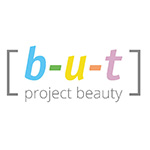
There is a lot going on in the world that might frighten you: war, poverty, injustice, cultural and political polarization, and then there is the climate crisis, and then there are some more. Some say we are in a poly-crisis, some even talk about a permacrisis, stressing these problems won’t go away soon. Moreover, the issues are not isolated, but seem to be connected. So where does one even start to find a beginning of a solution…
To create clarity, it helps to have a structure.
On the world stage of policy creation, the United Nations inventoried the seemingly overwhelming number of crises, and identified 17 areas that require attention. Together these map out all threats to the stability of the future of society as we know it: the Sustainable Development Goals (the SDG’s).
Because I’m intrigued by the meaning of beauty and by its consequences for society, I find it interesting to see how this phenomenon beauty relates to the SGD’s. Is beauty mentioned in the system of goals and indicators, meaning, does the UN considers beauty something which is threatened? If not – does it relate to any of the areas defined by the SDG’s? If so, how?
Is it strange to connect these high-level goals to something as ethereal as beauty?
Maybe, but when the SDG’s are supposed to be a “shared blueprint for peace and prosperity for people and the planet, now and into the future”, shouldn’t some perspective on beauty at least be part of such an endeavor? Does the way humans deal with beauty have anything to do with the 17 SDG goals? Or isn’t there any connection between beauty and a more sustainable world?
Based on the 17 Development Goals the UN formulated 232 indicators, meant to track the impact of all policies and plans that are developed to save the world. They constitute the foundation of the SDG’s. Let’s have a look at three of these indicators.
- ‘Adolescent birth rate (aged 10–14 years; aged 15–19 years) per 1,000 women in that age group.’? (SGD 3: Good Health & Wellbeing, Indicator 3.7.2)
- ‘Domestic material consumption.’? (SDG 8: Decent Work & Economic Growth, Indicator 8.4.2)
- ‘The proportion of populations that feel safe walking alone around the area they live after dark.’? (SGD 16: Peace, justice and strong institutions, Indicator 16.1.4)?
Do you think progress on any of these indicators could in some way be depending on the way human beings deal with beauty? And if so, shouldn’t the term beauty be mentioned at least once in the SDG framework?
Well, it’s not, and you can check for yourself by downloading the full set of indicators and do a Ctrl F-search on the text. The result is clear: zero instances of the word beauty, not one indicator contains at least a reference to the term. The SDG framework is primarily focused on symptoms, and not on mapping the drivers behind all that goes wrong with the planet.
But still, my question now is, is there at least an SDG goal that is related to what drives us humans?
Which of the 17 goals covers our inner condition, and not just planetary or societal ones?
When beauty is absent in someone’s life, it may lead to a lower level of happiness. The most obvious link then would be with the 3rd goal: ‘Good Health & Wellbeing’. Here at least, the name suggests that the UN has an open eye for physical and mental health problems too.
Alas, when we dive down to the 26 underlying indicators which describe how this goal is actually monitored, we’re in for a serious disappointment. The topic of ‘well-being’, contributing to 50% of the title of SDG3, is almost not specified at all. From the 26 indicators underlying SDG 3, 25 are focused on physical health issues and just one (1) on wellbeing. This is a rather poor sign for the amount of attention the UN has on mental health issues.
So, what is well-being all about, according to the UN? How is the UN measuring the level of happiness of the populations in the member states? What is this indicator that covers this complex theme in entirety?
According to the UN, wellbeing is measured by the ‘suicide mortality rate’ of a country. In essence: when someone dies without an obvious medical cause, this person probably didn’t feel too well.
Conclusion: not only is beauty absent in the SDG framework of the SDG’s, but the issue of well-being is not really addressed as well.
Years ago I attended a talk about the birth of the SDG framework by Charly Kleissner, Impact investor and co-founder of Toniic. In his speech, he continuously stressed that, first and foremost, a serious shift in consciousness was needed if the goals were to be attained. During the after-party I asked him why the term ‘consciousness’ itself was totally absent in the texts. He confessed that the political and bureaucratic foundation of the UN discourage the use of such a vague concept. It was A, mostly used in Western affluent countries, and B, a hard to observe mental concept, not easily measured in a non-disputable way. This probably also explains why the topic well-being is so poorly represented. All in all, to me, the SDG’s are still a great framework that draws up the balance of where society and the planet are at risk. It however lacks the ability to look at what is wrong on a deeper level, meaning it misses the tools to look at issues like consciousness, beauty, and well-being. Because of this, it was probably only a matter of time before this obviously fundamental blind spot was going to be addressed. Hence this beautiful new initiative, the Inner Development Goals, the IDG’s.
